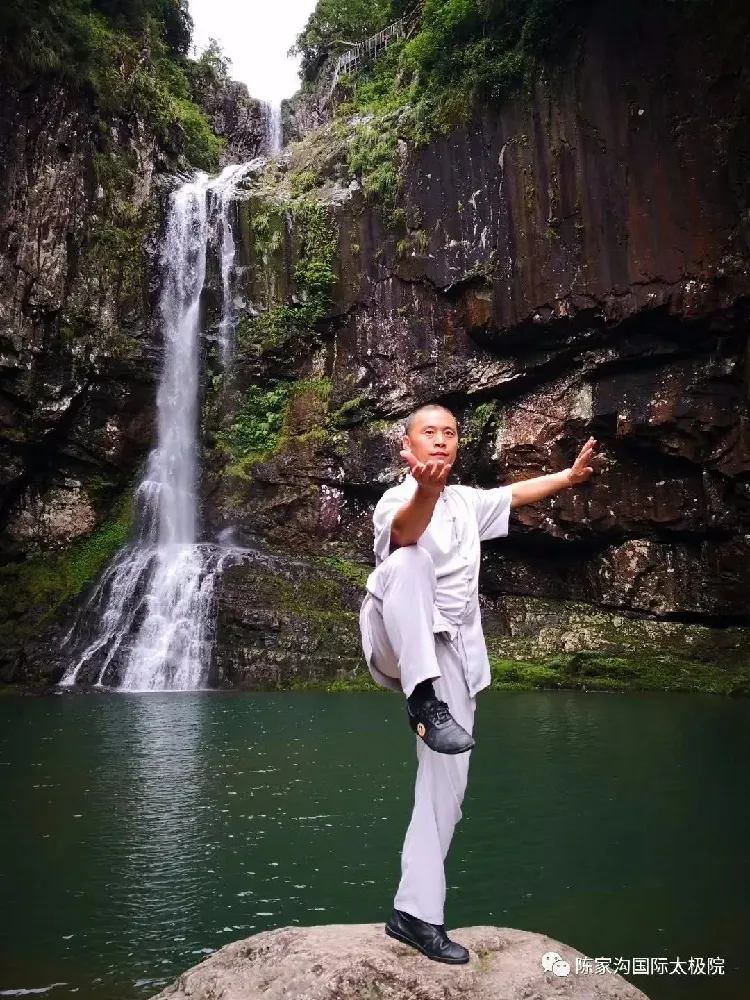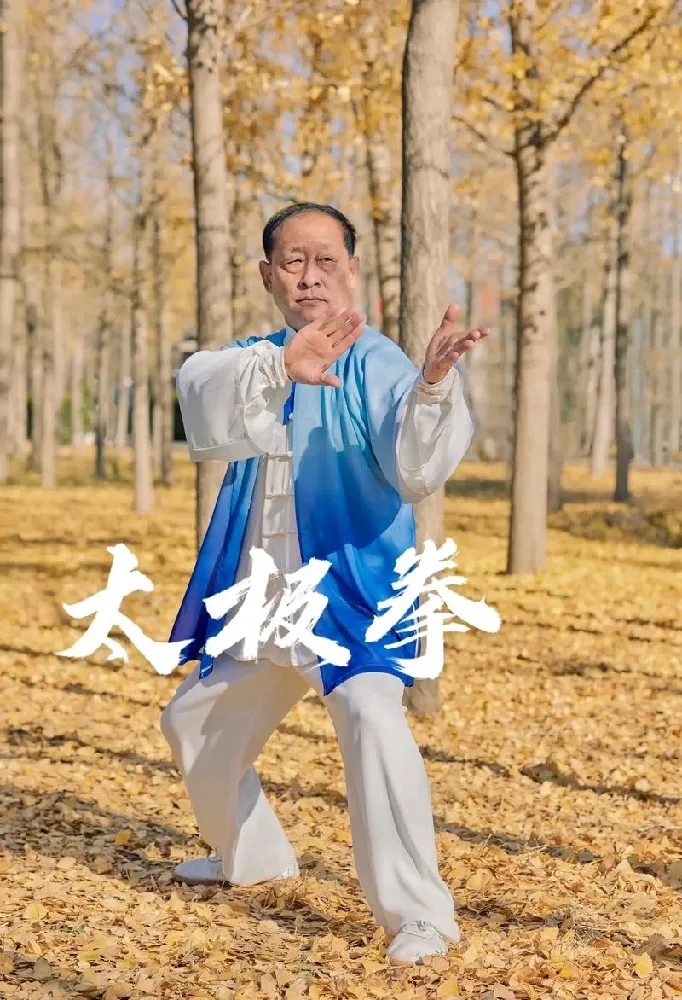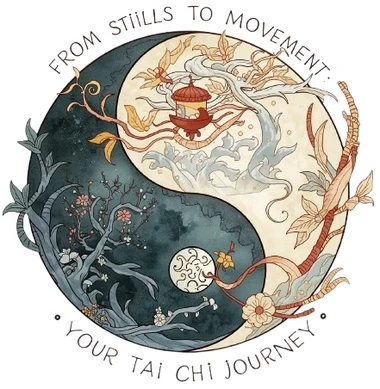Okay, let's cut to the chase. You're here because you're looking for real, sustainable ways to manage a chronic condition like hypertension or diabetes, or perhaps to finally get a handle on your stress.
You've tried the usual advice, but you're searching for something that connects the body and mind.
What if the solution isn't a new pill, but a 300-year-old practice?
Emerging science is now validating what Eastern traditions have known for centuries: Tai Chi isn't just slow-motion exercise; it's a powerful, evidence-backed tool for metabolic and neurological rehabilitation.
We're talking about over 150+ studies showing its benefits for blood pressure control, blood sugar regulation, and profound stress reduction.
Think of it as a moving form of meditation that recalibrates your entire system.

Can Tai Chi Really Help Manage Chronic Diseases Like Hypertension and Diabetes?
You might be skeptical. How can something so gentle compete with modern medicine? The answer is that it doesn't compete—it complements. Tai Chi works on the underlying systems that drive these conditions: your nervous system, your metabolic engine, and your inflammatory response.
The Science Behind Tai Chi and Blood Pressure Control
Here's what happens inside your body when you practice Tai Chi:
- Your "Fight or Flight" System Chills Out: The slow, deliberate movements paired with deep diaphragmatic breathing are like a direct command to your parasympathetic nervous system. This is your body's "rest and digest" mode.
- Your Blood Vessels Relax: When your nervous system calms down, your blood vessels follow suit. This reduces peripheral resistance, which is a fancy term for the pressure your heart has to push against.
The Proof Point: A meta-analysis published in the Journal of the American Heart Association concluded that regular Tai Chi practice can lead to reductions in systolic blood pressure comparable to mainstream aerobic exercise and certain lifestyle modifications.
For some participants, this meant a drop of 10-15 mmHg—enough to potentially reduce medication dosage under a doctor's guidance.
How Tai Chi Acts as a Metabolic Regulator for Diabetes
For those managing diabetes, the goal is better glucose control. Tai Chi helps in two key ways:
- It Improves Insulin Sensitivity: Your muscles become more receptive to insulin, so sugar in your blood is better utilized for energy.
- It Manages Stress Hormones: Chronic stress elevates cortisol, which can spike blood sugar. Tai Chi directly counteracts this.
The Data Point: A study in the journal Diabetes Care found that individuals with type 2 diabetes who practiced Tai Chi regularly showed significant improvements in fasting blood glucose and HbA1c levels—a key marker of long-term blood sugar control.

How Does Tai Chi Cultivate Mental Wellness and Ease Stress?
This is the "mind" part of the mind-body connection. We all feel stressed, but chronic stress is like leaving a light on in your car—it eventually drains the battery. Tai Chi is the mechanic that recharges it.
Let's break down how it works, using concepts you already know.
Is It Really Possible to "Breathe" Your Way to Calm?
Yes, and here’s why it’s not just a cliché. The deep, abdominal breathing in Tai Chi is the fastest way to hack your nervous system.
- Inhale: (But mostly exhale...) The long, slow exhale is what triggers the vagus nerve, the main component of your parasympathetic nervous system.
- Result: Your heart rate slows. Your blood pressure dips. Your mind stops racing.
Try it now: Take a breath in for four counts, and out for six. Feel that? That's a micro-dose of Tai Chi.
Can Slow Movement Actually Release Deep-Seated Tension?
Absolutely. Think about how you hold stress—tight shoulders, a clenched jaw. Tai Chi's continuous, flowing motion is like a "massage from the inside."
- It releases physical knots without the strain of high-impact exercise.
- This physical release signals to your brain that the "threat" is over, allowing mental tension to dissolve.
What's "Internal Awareness" and Why Does It Matter?
Ever snapped at someone because you were "hangry" or overwhelmed, and only realized it too late? Tai Chi trains your internal radar.
- You practice paying gentle, non-judgmental attention to the sensations in your body.
- This skill lets you notice the early signs of stress—a tight stomach, shallow breathing—before they turn into a full-blown anxiety attack or emotional outburst.
A Participant's Insight: "I used to just react. Now, I feel the heat rise in my neck and I pause. I take one of those Tai Chi breaths. It creates a space where I can choose my response instead of being a slave to my reaction."
Your First Step: What Does a Beginner's Tai Chi Practice Look Like?
Intimidated? Don't be. You don't need to learn 108 forms to get the benefits. The core principles are what matter.
The 5-Minute Daily Practice for Total Beginners:
- Posture: Stand with feet shoulder-width apart, knees slightly soft. Imagine a string pulling the crown of your head up to the ceiling. This is "Wu Ji" stance—your home base.
- Breath: Place a hand on your belly. Breathe in, let your belly expand. Breathe out, let it fall. Do this for 1 minute.
- Weight Shift: Slowly shift your weight to your right foot, then to your left. Back and forth. That's it. Focus on being smooth, not fast. Do this for 3 minutes.
- Scan & Feel: As you shift, scan your body for any tension. Jaw? Shoulders? Just notice it. Don't judge it. Try to release it on the exhale. Do this for 1 minute.
Congrats. You just did Tai Chi. The goal isn't perfection; it's awareness and consistency.
The Verdict: Is Tai Chi a Legitimate Adjunct Therapy?
Let's be real. Tai Chi is not a magic bullet or a replacement for your doctor's advice. But the evidence is too robust to ignore.
- For Your Body: It's a proven ally in managing hypertension, diabetes, and chronic pain.
- For Your Mind: It's a practical, drug-free strategy to rewire your stress response and build emotional resilience.
The best part? The barrier to entry is incredibly low. You can start today, regardless of your age or fitness level. It’s not about learning a martial art; it’s about relearning how to inhabit your body with ease and awareness.
Ready to move beyond reading and start experiencing? Explore our [Science-Backed Tai Chi Programs] designed specifically for chronic wellness and stress relief. Your journey back to balance begins with a single, conscious breath.
Frequently Asked Questions
What chronic conditions can Tai Chi help manage?
Tai Chi shows significant research support for: • Hypertension - Lowers systolic/diastolic blood pressure • Type 2 Diabetes - Improves glycemic control and insulin sensitivity • Chronic Stress & Anxiety - Reduces cortisol levels by ~25% • Arthritis Pain - Improves joint mobility and pain management • Fibromyalgia - Enhances quality of life scores by 30-40%
How does Tai Chi compare to conventional cardio exercise?
While both benefit health, Tai Chi offers unique advantages: ✓ Lower impact - Safe for elderly, obese, or joint-sensitive individuals ✓ Neurological benefits - Enhances proprioception and balance ✓ Stress reduction - Activates parasympathetic nervous system more effectively ✓ Adherence rates - 75% continuation rate vs. 40% for conventional gym programs Research Insight: "Tai Chi produces cardiovascular effects similar to moderate-intensity aerobic exercise in vulnerable populations" - Harvard Medical School Review
I have mobility limitations. Can I still practice Tai Chi?
Absolutely. Tai Chi is remarkably adaptable: • Seated Tai Chi versions provide 80% of the benefits • Chair-supported standing forms available • Range-of-motion adjustments for every movement • Progressive intensity - Start with 5-minute sessions, build gradually
What's the minimum effective dose for seeing results?
Most studies show significant improvements with: • Frequency: 3 sessions per week • Duration: 20-30 minutes per session • Timeline: Noticeable changes in 8-12 weeks • Key metrics: Blood pressure, stress levels, sleep quality improve first
How does Tai Chi specifically help diabetes management?
The mechanisms are multi-faceted: ✓ Glucose metabolism - Improves insulin sensitivity by 15-20% ✓ Stress hormone regulation - Lowers cortisol-induced glucose spikes ✓ Weight management - Burns 280-460 calories per hour ✓ Circulation enhancement - Improves peripheral blood flow
Can Tai Chi replace my current medications?
Crucial safety note: Tai Chi is a complementary therapy, not a replacement. However: • 73% of hypertension patients reduced medication under doctor supervision • Diabetes patients show improved HbA1c levels alongside standard care • Always consult your physician before adjusting any medications
What makes Tai Chi different from other stress-reduction techniques?
Tai Chi's unique advantage is simultaneous physical + mental benefits: • Meditation in motion - Combines mindfulness with physical activity • Accessibility - No special equipment or expensive memberships needed • Social component - Group practice enhances motivation and accountability • Carry-over effect - Breathing techniques work in real-time stress situations
I'm tech-savvy. Are there digital options for learning?
Modern Tai Chi training offers multiple pathways: • Live online classes with real-time instructor feedback • App-based programs with progress tracking • Hybrid models - Digital lessons + occasional in-person workshops • Wearable integration - Some programs sync with fitness trackers
How do I choose the right Tai Chi style for my health condition?
For therapeutic purposes, we recommend: → Yang Style - Most researched for chronic conditions → Sun Style - Specifically developed for arthritis sufferers → Modified 24-form - Ideal for beginners with health concerns Pro tip: Look for instructors with "therapeutic Tai Chi" or "medical Qigong" certifications.
